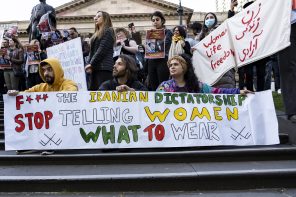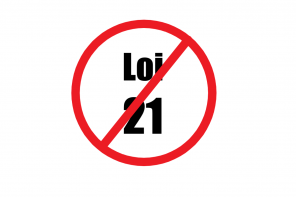By Sami Subhani
On October 16th the anti-ISIL coalition in Iraq – composed of the Iraqi army, the Kurdish Peshmerga, the Shia militia, and U.S air power and special forces – began the Mosul offensive, an assault from multiple fronts around the city aimed at pushing ISIL out of its last major stronghold in Iraq. There are several concrete reasons to be optimistic about this operation. The smorgasbord of actors that make up the coalition vastly outnumber their enemy and have experienced increasing victory against them thus far. Chasing ISIL out of Mosul will significantly deplete Daesh’s logistical power and its attractiveness to foreign fighters and most importantly it will liberate 1.5 million civilians from the dehumanizing way of life under ISIL.
However, in a broader context there are plenty of reasons to be skeptical of the meaningfulness of the expected victory in Mosul in terms of achieving a lasting peace in Iraq. The success on the battlefield obscures the fact that political actors within Iraq and their patrons abroad have failed to reach a power sharing agreement that can reconcile Iraq’s Sunni-Shia divide. Such divisions were exploited by Saddam Hussein, and then later by Nouri al-Maliki. If this trend does not stop, then the war might never either.
The rise of ISIL in Iraq was a direct consequence of the anti-Sunni policies of the former Prime Minister al Maliki. Maliki reneged on the accord established by American forces between the Sunni tribes and the Shia dominated central government in Baghdad by refusing to pay Sunni tribal militias and arresting prominent Sunni politicians. The sectarian strife generated by these policies propelled ISIL to power in Sunni areas by creating a leadership vacuum within the Sunni community and making political enfranchisement a far-cry for Sunni communities. Although many in the Shia community were alarmed at Maliki’s abuse of power, he continued to command the largest Shia constituency; as sectarian identities became more institutionalized, conflicts over status and power had a legitimizing effect on violence perpetrated by actors claiming to advance their community’s interests. Thus Sunni disenfranchisement and Shia antipathy has arguably been the leading cause behind the current conflict, and it is this root cause that military victory cannot possibly solve as it is political in nature.
The absence of peaceful relations between these communities means that the essential ingredients for ISIL in continuing its insurgency in Iraq remain. Although ISIL may no longer be able to defend its territory, losing any Weberian legitimization it might have gained, it will likely fall back on the hit-and-run terror tactics that it has employed to devastating effect in the years following the American withdrawal, when it was still widely known as Al-Qaeda in Iraq (AQI).
Despite wide acknowledgment of the sectarian issues in free-Iraq, in some ways the military campaign against ISIL has only served to reinforce these sectarian tensions. The clearest manifestation of this is the rise of the Popular Mobilization Forces (PMF), a group of semi-autonomous militias overwhelmingly composed of Shia fighters backed by Iran and indirectly by the United States, via the aid it provides to the Baghdad government. The PMF is ostensibly under the command of the Iraqi army, though its commanders turn a deaf ear when it suits them; the inability of the central government to keep them in check has enabled them to perpetrate widespread human rights abuses in liberated Sunni areas, including torture and executions, under the guise of ferreting out ISIL collaborators. This increase in Shia-led sectarian violence might be born of a desire to avenge ISIL’s massacre of the Shia as it gained power. So too, a lack of confidence in the official Iraqi Army given its dramatic collapse during ISIL’s blitzkrieg from Syria.
The freedom with which such brutal, sectarian actors are allowed to operate is seen by many Sunnis as a continuation of Maliki’s divisive policies by the new government in Baghdad; reinforcing their pre-existing distrust towards the central government. With Maliki no longer Prime Minister, his successor Haider al Abadi has struck a conciliatory tone with Iraqi Sunnis, though most remain unconvinced.
Another carryover from the Maliki era is the lack of a unified, cohesive, and broadly representative Sunni political movement that can fill the leadership vacuum Daesh has left in the Sunni community. Various leaders claiming to speak on behalf of the Sunni community are often at odds with each other and with other social actors such as clerics, tribal leaders and businessman. Thus far there has been no party or ideology to coalesce these actors into a unified movement. This is not only an advantage for ISIL, but it also makes it vastly more difficult for the Abadi administration to find a reliable and influential partner in a potential power sharing agreement. Although Abadi has made an effort to include Sunnis in his government, most people in the Sunni community see this as a mere symbolic gesture.
The key factors behind ISIL’s rise to power continue to persist as the Sunni leadership remains internally fragmented and the Shia dominated government unable to win their trust and allegiance. In a perverse way the anti-ISIL coalition only seems to have strengthened these factors through its irresponsible empowerment of vengeful Shia fighters who pay little heed to any authority but their own. Military solutions may not be able to solve political problems; but they can make political problems far worse. For these reasons it is more than likely that what we are witnessing in Mosul is not the end of ISIL but the precursor to a rebirth.
Abu Mohammad al Adnani explained that the recent losses in territory do not mean defeat but rather a temporary retreat into remote desert areas from where they can conduct terror campaigns in coordination with urban sleeper cells. Again, this strategy emulates the group’s survival strategy when U.S. forces handed over the bulk of responsibilities to the Iraqi Army in 2007. The group mounted an improbable comeback from the verge of defeat by conducting hit-and-run attacks against overstretched security forces and tribal militias; the fact that these adversaries were often at odds with each other may well have doomed an effective response to this strategy. Recent interviews with security officials in Salah ad Din province have backed up claims of recruitment in liberated regions and a switch to hit-and-run suicide attacks targeting populated areas. The continuing enmity between Sunni and Shia political and armed forces may once again hamper a successful counter-strategy.
Thus, while the Iraqi government and its allies have all but freed its Sunni population from ISIL control, they will still continue to live under the shadow of its terror and the prospect of continued bloodshed. Until the efforts and sacrifices in the battlefield are matched by the efforts and sacrifices in the political sphere there will be little that can change this disheartening predicament.
Photograph sourced from The Economist








